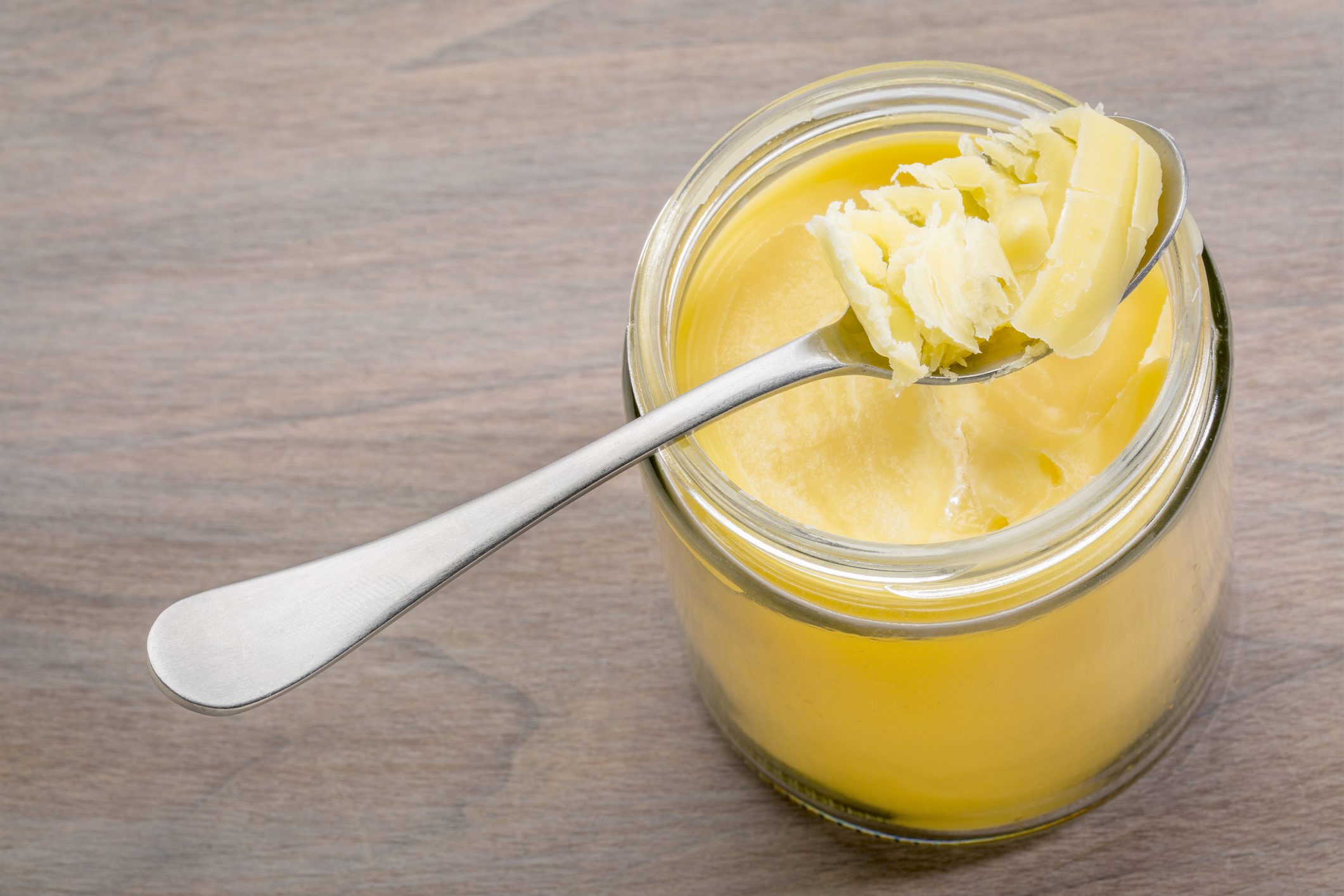Ghee (also known as clarified butter) is delicious with a nutty aroma. It’s easy to make at home, perfect for those who are dairy-sensitive and cheaper than what you can buy in the store. Watch the tutorial video below!
I learned how to make ghee several years ago for my brother and a few friends who are dairy-sensitive. Up until then, I’d always bought it in the store. But it’s incredibly easy to make and great for those following a specific dairy-free diet like paleo or Whole30.
Why do I love ghee? It’s shelf stable and has a high smoke point. That means it’s a great cooking fat and you can fry with it. It also has a distinctly sweet and nutty flavor that’s just delicious in so many different recipes.
A jar of ghee is like liquid gold and even if you don’t have any dietary sensitivity to dairy, I think you’ll simply love cooking with it.
Ghee is similar to clarified butter, where all the milk solids are removed, but it’s cooked just a tad bit longer. Those extra couple of minutes allow the milk solids on the bottom of the pan to begin to brown, which gives ghee a slightly different, more nutty flavor profile to clarified butter.
Ghee is a traditional Indian food and has been enjoyed in the Middle East and Asia for thousands of years. It’s also frequently used in Ayurveda and other healing medicines.
If you can melt butter on the stove, you can make ghee! Essentially, you just leave butter on a medium low stove for 10 minutes until you see golden bits on the base of the pan which are the milk solids – and this means it’s done. The water has evaporated and the dairy has solidified which will be strained out.

How to Make Ghee (3 Easy Steps)
Remember to start with the best ingredients possible by using unsalted, organic, grass-fed butter.
- Add about a pound to a small pot and cook on low heat. Once the butter is melted and it starts to simmer, you’ll notice the ghee separates into three layers.
- Foam forms on the top and it’ll sputter a bit, which is the water evaporating. Skim that off with a spoon (you’ll have to do this several times). As the ghee continues to cook, that foam turns into clear bubbles and the middle layer becomes translucent. You should also start to see the milk solid sludge sticking to the bottom of the pot.
- After 25-30 minutes, your ghee should be done. Turn off the heat and let it cool for a couple minutes, then strain it into a glass storage container. The ghee will become opaque and light yellow as it cools.
Watch my tutorial video above to see exactly how I make ghee. You can store the ghee at room temperature in a cupboard (away from direct light) for a few months. If you plan to keep it longer, it’s best to store in the refrigerator where it will last about a year.
More Easy Kitchen Staple Recipes

How to Make Ghee | Chef Jean-Pierre
FAQ
Is it safe to make ghee from butter?
How much ghee equals a stick of butter?
How much butter is lost when making ghee?
How to convert butter to ghee?
Here’s a step-by-step guide on the butter to ghee conversion recipe. Use grass-fed unsalted butter for the best results in ghee making. Avoid salted butter, as it can affect the taste of the final ghee. Place the unsalted butter in a heavy-bottomed saucepan. Use a larger pan than you think you need to prevent overflow.
What are benefits of ghee and butter for eyes?
Both are rich in fatty acids such as linolenic, butter ghee is also a source of several vitamins, such as A, D, E and K. It also offers antioxidants for the health of the body. This combination of nutrients helps prevent macular degeneration and cataract development. The only difference is that regular butter has lactose, and ghee does not.
Can you replace butter with ghee?
In terms of replacement, the butter to ghee ratio is 1:1. However, only grass-fed ghee is the best option to replace butter. Ghee Dominance: Higher ghee ratio intensifies richness, imparting a distinct nutty flavor to dishes.
Is ghee better than butter?
However, ghee is more moistening than butter, so instead of butter, it will add a more creamy texture to your cooked dish if you use ghee. In terms of replacement, the butter to ghee ratio is 1:1. However, only grass-fed ghee is the best option to replace butter.
